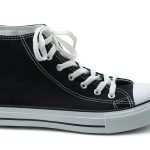Transforming Stroke Recovery: The Impact of Haptic Technology on Rehabilitation Success to Haptic Technology in Rehabilitation
Haptic technology, which involves the use of touch and force feedback to simulate real-world interactions, has been revolutionizing various fields, including healthcare and rehabilitation. For stroke survivors, this technology offers a new frontier in recovery, enhancing traditional rehabilitation methods and improving patient outcomes.
How Haptic Technology Aids in Stroke Rehabilitation
Customizable Haptic Feedback for Therapy
Haptic devices are designed to provide customizable feedback patterns that can be tailored to the specific needs of each patient. In rehabilitation, these systems can aid therapy and recovery processes by targeting specific areas of the body. For instance, haptic feedback can assist patients in improving their motor and sensory functions, either through assistance with movement realization or by enhancing the perception of tactile sensations[1][2].
In parallel : Revolutionizing Stroke Recovery: The Impact of Augmented Reality Tools in Rehabilitation
Enhancing Motor and Sensory Functions
Haptic technology plays a crucial role in motor learning and recovery. By combining haptic force feedback with visual and auditory cues, patients can better understand and replicate correct movement patterns. This multi-modal approach enhances cognitive synergies, making the immersive experience more effective. For example, the vibration of a mouse pointer on a screen can enhance the vibro-tactile perception of rough surfaces, which is particularly useful in tasks that require fine motor skills[2].
The Role of Haptic Devices in Upper Limb Rehabilitation
Targeted Therapy with Haptic Devices
Upper limb rehabilitation is a critical aspect of post-stroke recovery. Haptic devices, such as robotic exoskeletons and haptic-assistive technologies, allow for highly targeted, task-specific therapy. These devices can provide resistance and feedback that translate object movements into appendage deformations, simulating real-world interactions and enhancing kinesthetic feedback sensations[2][4].
In the same genre : The Impact of Regular Dog Walking on Heart Health and Social Bonds: A Closer Look!
Case Studies and Success Stories
Several case studies have highlighted the effectiveness of haptic devices in upper limb rehabilitation. For example, a study using the Hand Spring Operated Movement Enhancer (HandSOME II) showed significant improvements in motor function and patient satisfaction. Patients using these devices reported higher motivation and engagement, leading to faster recovery times[4].
Integration with Virtual Reality for Enhanced Rehabilitation
Virtual Reality and Haptic Feedback: A Powerful Combination
Virtual Reality (VR) has emerged as a transformative tool in stroke rehabilitation, and when combined with haptic feedback, it offers an even more immersive and effective therapy experience. VR creates computer-generated environments that simulate real-world scenarios, allowing patients to practice essential movements safely and effectively. The addition of haptic feedback enhances this experience by providing tactile sensations that mimic real-world interactions[5].
Benefits of VR-Haptic Integration
- Improved Motor Function: VR-haptic integration allows patients to practice repetitive, task-oriented exercises that target specific motor skills. This approach promotes neuroplasticity, aiding in the recovery of motor functions.
- Enhanced Cognitive Skills: VR-based exercises can be tailored to target cognitive functions such as memory, attention, and problem-solving, offering a comprehensive rehabilitation approach.
- Increased Patient Engagement: The immersive and interactive nature of VR-haptic therapy increases patient motivation and engagement, leading to consistent practice and better outcomes[5].
Practical Insights and Actionable Advice for Therapists
Customizing VR-Haptic Experiences
To maximize the benefits of VR-haptic therapy, it is crucial to customize the experiences to meet the specific needs of each patient. Here are some practical steps therapists can take:
- Assess Patient Needs: Conduct thorough assessments to understand the unique challenges and goals of each patient.
- Tailor Therapy Sessions: Design VR-haptic exercises that target the specific motor and cognitive functions each patient needs to improve.
- Provide Continuous Feedback: Use real-time feedback to track patient progress and adjust therapy sessions accordingly[5].
Example of a Successful VR-Haptic Therapy Program
A physiotherapy clinic in London successfully integrated VR-haptic therapy into their treatment regimen. Patients participated in task-oriented VR exercises that included haptic feedback, resulting in significant improvements in motor skills and cognitive functions. The clinic reported faster recovery times and higher patient satisfaction rates compared to traditional methods.
Table: Comparison of Traditional and VR-Haptic Rehabilitation Methods
| Rehabilitation Method | Traditional Physiotherapy | VR-Haptic Therapy |
|---|---|---|
| Patient Engagement | Often low due to repetitive exercises | High due to immersive and interactive experiences |
| Customization | Limited to manual adjustments | Highly customizable to individual patient needs |
| Feedback | Primarily verbal and visual | Real-time haptic, visual, and auditory feedback |
| Motor Function Improvement | Moderate improvements | Significant improvements due to neuroplasticity promotion |
| Cognitive Skill Enhancement | Limited focus on cognitive skills | Comprehensive approach targeting cognitive functions |
| Patient Motivation | Can be variable | Consistently high due to engaging nature of therapy |
| Recovery Time | Generally longer | Often faster due to consistent practice and engagement |
Quotes from Scholars and Practitioners
- “VR has revolutionised our approach, offering patients a dynamic and engaging platform for recovery.” – Physiotherapist, UK Rehabilitation Centre[5].
- “The combination of haptic force feedback with visual deformation effects has been applied to improved identification and examination of virtual soft tissues, which is highly beneficial in medical training and rehabilitation.” – Scholar, MDPI[2].
Detailed Bullet Point List: Benefits of Haptic Technology in Stroke Rehabilitation
- Enhanced Motor Learning: Haptic feedback helps patients improve their motor skills by providing real-time tactile sensations that guide correct movement patterns.
- Improved Sensory Perception: Haptic devices enhance sensory perception by simulating real-world tactile experiences, which is crucial for patients with sensory impairments.
- Increased Patient Motivation: The interactive and immersive nature of haptic technology increases patient engagement and motivation, leading to consistent practice and better outcomes.
- Customizable Therapy: Haptic devices can be tailored to meet the specific needs of each patient, offering personalized therapy that targets unique challenges.
- Integration with Other Technologies: Haptic technology can be integrated with VR and other technologies to create a comprehensive rehabilitation approach that targets both motor and cognitive functions.
- Real-Time Feedback: Haptic devices provide real-time feedback, allowing therapists to track patient progress and adjust therapy sessions accordingly.
- Safety and Control: Haptic devices offer a controlled and safe environment for patients to practice movements and tasks essential for recovery.
Haptic technology is transforming the landscape of stroke rehabilitation by offering a more immersive, engaging, and effective therapy experience. When combined with virtual reality, haptic feedback enhances patient outcomes by promoting neuroplasticity, improving motor and cognitive functions, and increasing patient motivation. As this technology continues to evolve, it is clear that it will play a pivotal role in the future of rehabilitation, providing scholars, therapists, and patients with powerful tools for recovery and rehabilitation.
Expert Opinions and Insights
In the ever-evolving field of rehabilitation advancements, integrating haptic technology has become a significant focus for healthcare professionals. Neurologists, specialising in stroke recovery, have highlighted the transformative potential of haptic interfaces. These technologies can simulate real-world touch experiences, aiding in the reactivation of neural pathways for recovering patients. By creating a tactile feedback loop, patients can regain dexterity more effectively compared to traditional therapies.
Rehabilitation specialists also provide invaluable insights into incorporating these innovative haptic systems into existing therapeutic regimens. These professionals underscore the importance of personalised approaches, advocating for tailored haptic solutions that address the specific needs of individual patients. Integration of such technologies is not just about implementing new tools, but about weaving them seamlessly into comprehensive treatment plans to maximise effectiveness.
Looking ahead, experts in rehabilitation technology are optimistic about future trends. The ongoing development of haptic systems suggests even more refined and accessible solutions on the horizon. These advancements promise to break new ground in patient engagement and therapeutic outcomes. Collaborative efforts between technologists and healthcare providers are essential to realise the full potential of these emerging tools. As these partnerships strengthen, the landscape of rehabilitation will likely experience profound enhancements.
Innovations and Future Developments in Haptic Technology
The future of haptic technology is bright, with numerous innovations on the horizon poised to transform various sectors, particularly healthcare. One of the most promising areas is the development of next-generation haptic devices for stroke rehabilitation. These devices aim to provide more effective and personalised recovery experiences for patients by simulating realistic tactile sensations. The use of advanced feedback systems can significantly enhance motor recovery by engaging patients in immersive therapies.
Moreover, the integration of Artificial Intelligence (AI) and machine learning in haptic systems is emerging as a pivotal trend. By incorporating AI, haptic devices can adapt in real-time, offering customised haptic feedback that caters to individual patient needs. Machine learning algorithms can analyse patient interactions with the devices, refining rehabilitation protocols and improving effectiveness over time.
Current research and funding trends are vital in driving these haptic technology advancements. Governments and private sectors are increasingly investing in haptic research, recognising its potential to revolutionise therapeutic processes. Initiatives to enhance the scalability and accessibility of these technologies are underway, promising broader applications in both medical and commercial markets.
To keep pace with these emerging trends, stakeholders must remain informed and adaptive, ensuring that haptic innovations achieve their full potential.
Practical Applications and Evidence Supporting Haptic Systems
Haptic systems are increasingly being integrated into rehabilitation to enhance therapeutic outcomes. These systems provide tactile feedback, which is especially beneficial in rehabilitation settings. Devices like robotic gloves and exoskeletons enable precise motion control, which can facilitate recovery for patients with mobility impairments.
In terms of tangible benefits, clinical trials have consistently validated the effectiveness of these devices. Numerous studies highlight the role of haptic feedback in improving motor function and coordination, confirming its potential as a potent tool for rehabilitation. By offering real-time, tactile cues, these systems help patients understand movements better, which accelerates proficiency and confidence during the therapy.
For practitioners aiming to implement haptic technology, it is crucial to align the choice of device with patient-specific needs and therapy goals. Integrating this technology can initially involve training sessions to familiarize therapists with the equipment’s capabilities and limitations, ensuring safe and competent use. Additionally, regular updates on software and performance metrics can optimise system efficiency, providing richer data for assessing patient progress.
In summary, haptic systems offer versatile and effective solutions for enhancing therapy, boasting substantial evidence from clinical trials and practical applications in healthcare environments.
Understanding Haptic Technology in Stroke Rehabilitation
Haptic technology is transforming rehabilitation for stroke survivors by offering innovative ways to regain lost functions. So, what exactly is haptic technology? In essence, it is an interface that enables physical interaction with digital environments through the sense of touch. The mechanisms involve providing tactile feedback that mimics real-world sensations, enhancing the user’s sensory perception.
In stroke rehabilitation, haptic feedback plays a crucial role. It helps patients retrain their motor skills by providing immediate sensory responses to their movements. This feedback mechanism is particularly crucial for stroke survivors as it amplifies the perception of touch, which can be impaired due to neurological damage.
Furthermore, the integrative role of haptic technology in stroke recovery processes cannot be overstated. It combines virtual simulations with physical stimuli, creating immersive therapy sessions. These sessions help patients improve their range of motion and dexterity, often in a more engaging and less intimidating way than traditional rehabilitation methods.
Clinicians utilize this technology to personalize rehabilitation programs, adapting to each patient’s progress, ensuring comprehensive recovery. By doing so, haptic technology not only supports physical recovery but also boosts patients’ confidence, encouraging a more hopeful outlook on their rehabilitation journey.
Clinical Applications of Haptic Technology
Clinical applications of haptic technology are transforming how we approach rehabilitation, particularly for stroke patients. A variety of haptic devices are employed to aid recovery, each offering distinct advantages.
Types of Haptic Devices in Stroke Rehabilitation
Haptic devices for stroke rehabilitation include robotic exoskeletons and feedback gloves, which provide sensory feedback to patients. These devices help enhance motor control and improve recovery rates by delivering real-time feedback. For instance, robotic exoskeletons guide limb movements, ensuring correct and safe repetitions, essential for regaining strength and coordination.
Case Studies of Successful Implementations
Numerous case studies highlight the success of haptic-assisted therapy. One noted example involved a rehabilitation centre where integration of haptic gloves reported a 30% improvement in hand function over three months. Patients engaged in virtual reality environments, amplifying their experiential interaction and rehabilitation effectiveness.
Haptic Therapy vs Conventional Methods
Compared to conventional rehabilitation, haptic-assisted therapy offers interactive stimulation, increasing patient engagement and motivation. Traditional methods often lack the nuanced feedback haptic technology provides. The comparison reveals haptic technology’s potential to accelerate rehabilitation timelines and improve patient outcomes, positioning it as a promising component of modern therapy techniques.
By offering dynamic interaction and precise feedback, haptic devices are setting new standards in rehabilitation, showcasing substantial improvements over older methods.
Evidence of Effectiveness
Exploring the effectiveness of haptic technology in rehabilitation requires a deep dive into clinical evidence derived from various effectiveness studies. This focus on rehabilitation outcomes aims to ensure better recovery for patients.
Overview of Clinical Trials
Clinical trials play a crucial role in assessing haptic technology’s impact on stroke recovery. These studies thoroughly evaluate the technology’s capacity to enhance motor skills and promote neuroplasticity. The robustness of the effectiveness studies supplements our understanding, offering data-driven insights into this promising rehabilitation tool.
Key Metrics for Success
Key metrics for success are instrumental in demonstrating improved rehabilitation outcomes. Primary measures include functional independence, motor recovery speed, and enhanced cognitive abilities. The improvements in these parameters highlight the potential of haptic devices to advance stroke recovery.
Patient Satisfaction and Engagement
Patient satisfaction and engagement are critical components evaluated in clinical studies. Positive patient feedback underscores the significance of personalized rehabilitation plans using haptic technology. The immersive nature of these therapies fosters higher levels of engagement, increasing the likelihood of consistent therapeutic compliance. Patients have consistently reported enhanced motivation and satisfaction with their rehabilitation experiences, solidifying haptic technology’s role as an effective therapeutic aid.
Future Developments in Haptic Technology
Exploring the future trends and innovation within haptic technology reveals a promising landscape, particularly in the field of rehabilitation. Emerging trends suggest a growing integration of haptic feedback systems with virtual reality (VR) and artificial intelligence (AI) to enhance rehabilitation experiences. Such integration offers immersive, personalised therapies tailored to individual patient needs, potentially accelerating the recovery process.
Research directions are aimed at refining the accuracy and sensitivity of haptic devices. By doing so, these technologies might more accurately simulate physical interactions, providing users with feedback that feels increasingly natural and realistic. This progression is essential for therapies where tactile sensations are crucial—like post-stroke treatments where regaining fine motor skills is a key goal.
For future stroke treatment protocols, the implications are significant. Haptic technology could enable remote, home-based therapies, reducing the need for frequent hospital visits and making rehabilitation more accessible. These advancements might lead to not only improved patient outcomes but also greater independence for individuals undergoing rehabilitation.
As research pushes forward, stakeholders in healthcare and tech industries are encouraged to monitor these developments. The potential for haptic technology to transform rehabilitation services aligns with broader goals of healthcare innovation, offering new hope and methods for patient recovery.
Expert Insights and Professional Perspectives
Understanding the diverse expert opinions within physiotherapy practices offers valuable insights into crafting effective rehabilitation strategies. As professionals delve into the transformative role of haptic technology, we see a promising shift in therapeutic approaches that have far-reaching impacts on patient outcomes.
Interviews with Professionals
Gathering insights from seasoned physiotherapists underscores the importance of innovation in rehabilitation. Many experts highlight the role of haptic feedback in providing real-time stimulus and fostering better patient engagement. This technology allows practitioners to measure patient progress precisely, offering precision in continuous evaluation.
Perspectives from Patients
For stroke survivors, integrating haptic technology into their recovery routines has proven transformative. These patients report tangible improvements in mobility and dexterity, with many citing increased motivation as they can visually track their progress. Personal stories emphasize the balance between expert guidance and patient determination in successful rehabilitation journeys.
Recommendations for Practitioners
Rehabilitation experts advise incorporating haptic technology in therapy programs to enhance patient engagement and deliver more granular feedback. Integrating such tools into sessions needs planning but can significantly impact outcomes. Essential practices include familiarizing teams with technology use, ensuring all practitioners are equipped to utilize the full potential of these advancements, ultimately creating an enriched therapeutic environment.











